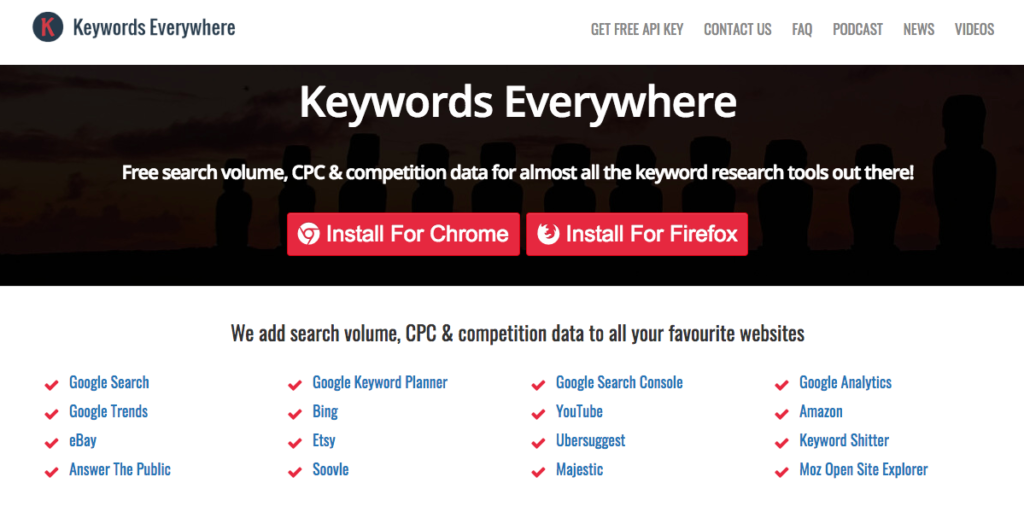Your blog may contain outstanding content, but is it genuinely excellent if no one can find it? Is your pricelessly useful information making you any money if your site isn’t getting any traffic? If you’re interested in Search Engine Optimization for your blog or website, then keyword research is one of the most critical tactics available for you to learn.
A good SEO strategy is vital if you want your blog to rank higher on search engine results pages (SERPs) and attract more organic traffic to your site. Keyword research is one of the most essential activities of any successful SEO campaign.

When done correctly, it can help rank your blog pages for more keywords and attract more traffic to your site. It’s simple; if you want your blog to rank higher on the search engine index, you’ll have way more luck if you’ve done some quality research into which keywords to build your content around.
What is Keyword Research?
Keyword research is a highly important aspect of search engine optimization that involves identifying popular keywords and phrases that users enter into search engines. What words or phrases are people searching for, and what demand exists for more content related to these keywords.
With this information, you can then best identify how to structure your content around these topics to attract more traffic to your blog or website. If you want the most significant return possible when performing keyword research, keep in mind what your potential viewers or customers are looking for. The searcher is searching for a reason. They have a need. Can your blog or website fulfill that need?
What is Search Intent?
When it comes to researching and identifying which keywords to create your content around, it may at first seem obvious to base your chosen phrases on the searches with the highest volume. While search volume is an essential factor in keyword research, it isn’t always reliable in providing an accurate keyword profile around which to structure your blog’s content.

Search volume on specific keywords can be misleading at times when it comes to traffic potential to your site. (Install the Chrome extension Keywords Everywhere for a quick way to see search volume of any term on major search engines, Amazon and many more).
A high search volume for a particular word or phrase may not result in a lot of click-throughs on the SERPs (search engine results pages). This is especially true for topics where the SERP provides an answer box and offers the searcher the information they were looking for, thus eliminating the need to click through to one of the indexed web pages.
To find a better metric to base your keyword research around, you should ask yourself a question: What are searchers looking for when they’re entering these key phrases? What is the search intent of the user who’s googling information about the topic you’ve chosen?
Although search intent isn’t always obvious, if you learn to look for it you’ll be able to understand better how you can build your content to fit the needs of your potential viewers. This can significantly impact the results of your research and drastically increase possible conversions and traffic to your blog.
Categories of Search Intent
There are four main types of queries into which the intent of almost any searched query can be categorized. These four categories are informational intent, navigational intent, commercial intent, and transactional intent.
It’s generally not very difficult to identify search intent of any key phrase that you select. Some searches are more stringent than others, however, when it comes to identifying intent.

Informational Intent
A huge chunk of internet searches are performed by people looking for information. In this category, the searcher has either a specific question that they would like answered or they need more information about a particular topic. Queries in this category generally include question words like who, what, when, where, why, and how. This is the most popular form of search intent.
Navigational Intent
Searchers with navigational intent are usually looking to be directed to a specific website. Navigational searches can generally be identified by the inclusion of a brand name in the query. A person who searches for Facebook likely wants to go to the Facebook website.
Ranking high on a navigational term is only beneficial to the organic traffic of your site if it’s the site that the searcher is looking for. If the content of your blog is centered around news or ideas about Twitter, then you could potentially rank highly in searches for “Twitter.” However, this likely won’t draw a lot of traffic to your site, as people who search for the word “Twitter” are probably just wanting to be directed to the Twitter site.
Commercial Intent
If a searcher is looking for information on a product, or if he or she is looking to compare two or more products, then the search intent is a financial investigation. The person may be looking for reviews on products or services on Yelp, Amazon, or some comparison site to decide how to spend their money best.
They are generally looking for unbiased reviews of the products they’re interested in. Some of the words that help to identify these types of searches are, “best” and “vs.,” or any specific attributes of one or more products that they are looking to purchase potentially.
Transactional Intent
Whenever a person performs a search to purchase or download goods or services, they have transactional intent. Transactional intent can generally be identified with queries including, “buy,” “download,” ”sale,” or “near me.”
Long-Tail Keywords

Targeting specific long-tail topics is a wonderful way to gather traffic to your blog or website and to boost your ranking on the search engine index. A long-tail keyword is a particular phrase made up of keywords that have a lower search volume than general broad stroke keywords.
When structuring your content around key phrases, the broader the keyword, the higher your competition will be for ranking highly for that specific word. Choosing highly specific phrases to represent your content puts you at a lower rate of competition and a higher rate of user conversion for users who are looking for someone to serve their search intent.
If your blog can serve the searchers, long-tail keywords are an excellent way to let them know your site exists.
Keyword Research: Step-by-step
Step 1 – Check Search Volume and Traffic Potential
To optimally perform keyword research your best bet, in addition to manually researching on-page and taking full advantage of Google’s SEO services, is to use one of the many quality SEO keyword research tools available online. Each of the different available tools has its pros and cons, but each offers more information than you would be able to find manually.
A few examples of quality SEO research tools are Ahrefs, Moz, and SEMRush. It’s best to find the one that suits your blog’s specific needs.
Using the SEO tool of your choice, look up your chosen long-tail topic. Check its search volume and how many clicks it receives.
Pay special attention to the traffic potential of your topic, as well, to better assist your chances of ranking for your selected keywords. These numbers should give you a good idea of your chances of ranking.
Step 2 – Spy on Your Competitors

If you want to boost your rankings for your chosen keywords, it’s best to learn from the best. Take a look at the pages of your top competitors that generate the most traffic for the topic you’ve chosen. After all, if they rank highly, they must be doing something right.
It’s always a good idea to do some on-page research of the highest-ranking competitors in your chosen long-tail topic. From there, you’ll be able to identify which keywords can offer your site the most traffic potential.
Step 3 – Identify the Search Intent
Using Google, perform a search for the long-tail phrase you’ve chosen and analyze the top results. Try and figure out the search intent. Do the people searching for your keywords want information? Are they looking to purchase a good or service?
After you’ve identified the search intent, ask yourself if your blog or website can fulfill that intent. If the searcher is looking for info on your topic, can your blog provide the necessary information? Whenever possible, you can begin assessing your ranking difficulty. If you can’t, then it’s time to move on to another keyword.
Step 4 – Assess your Ranking Difficulty Manually
While the popular online SEO tools usually provide an average ranking difficulty score for selected keywords, it’s a good idea to manually assess your ranking difficulty by investigating the top-ranking pages of your chosen topic. Evaluate the quantity and quality of their links.
To rank higher, your site will need to have a better link profile than your competitors. You also want your blog to rank highly with at least as many keywords as your highest competitors to maximize potential traffic gains. Your content may be more valuable than theirs, but will you be able to outrank the competition?
Step 5 – Content Gap Analysis
Gaps in content are detrimental to the success of your blog in the search engine rankings. If your competitors are offering more than you are, then you won’t rank as highly in searches for your chosen keywords.
To do a content gap analysis, perform an on-page investigation of the top results for your chosen long-tail phrase, and identify any content gaps that you may have. See which common keywords these top sites rank for and what your content could be lacking.
Adding these additional related long-tail keywords into your content will significantly increase your chances of ranking and future potential site traffic.
Step 6 – Structure your Content Around These Keywords

Build your site’s content based around the new long-tail keywords you discovered during your content gap analysis. The goal is to outline your content around these words in a way that Google will recognize as able to fulfill search intent.
If your content can serve the intent of the searcher and possesses enough related long-tail keywords, you’ll rank higher in the index and receive more potential traffic. Content is the crucial aspect of success in the search engine rankings. If you use these key phrases to frame your blog’s content, search engines will take notice.
Step 7 – Build Those Links
Now that you’ve researched your keywords and created your content, it’s time to create a link profile. Building quality links to your content will significantly help to boost organic traffic to your site. If your competitors have a better link profile than you then you may not rank as highly, even if your content is just as good or better.
Use the information you gained in step 4 to assess how many links the top competing sites have and what the quality of those links are and build a superior link profile. You’ll need at least as many quality links as they have to rank higher on the SERPs.
Repeat the Process
After completing steps one through seven, you should now have some quality content based on your long-tail keyword research. Now it’s time to choose the next long-tail topic and repeat the process. The work of an SEO-savvy blogger never ends.

Wrapping Things Up
To conclude, search engine optimization is an extremely important factor in the success of your blog or website. If you don’t rank highly on the search engine index, you’ll never get noticed.
Keyword research is one of the most significant aspects of SEO for bloggers, business owners, and anyone who wants their website to succeed. Performing keyword research correctly and using researched long-tail phrases to structure your blog’s content is a great way to boost your ranking.
What Google and other search engines look for, and thus the key to proper keyword research, is always to keep the intent of the searcher in mind. Always ask yourself what the searcher is looking for, if your blog can fulfill that need, and how you can optimally structure your content to serve that user’s intent best.


